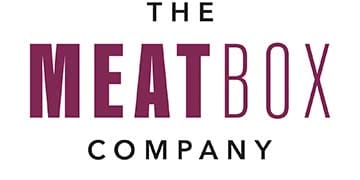To Build the Perfect Burger
Burgers are simple, yet complicated. That’s a contradictory start to any blog. What I mean to say is, the principle of a burger is that it’s a ball of minced meat which has been flattened. That’s a simple idea. How you do this and whether you add anything, that’s where the complication starts.
The Meat
Most burgers are produced on a least-cost basis. Least cost means you can sell it for less than the opposition, capture more market and make more money. Forget quality, use cheap meat, as much fat as you can get away with and as much filler material as you can to lower the cost even more.
The perfect burger is made from beef brisket. It has a great texture, the right mixture of lean and fat (you want some fat to add to the flavour, just not too much) and the flavour of brisket is probably the best of any joint on a bullock.
The Process
Mincing and mixing… The more you process meat, the more it goes pasty and when cooked, rubbery. No one wants a rubbery burger. You want a burger to have an open texture so the flavours can mix when you are cooking it and flood out into your mouth when you bite into it. To make a perfect burger you should mince the brisket once through a large mincer plate, mix the ingredients in your mincer lightly and then mince again through a smaller plate. You must weigh the meat to get the right sized burger and then lightly press it into the depth and shape you require.
Commercial burger production normally involves squeezing the minced meat through tubes into a die that spins and drops the over-manufactured meat onto a belt; the belt takes the burger off for packing. All this squeezing and smearing and compressing results in a dense, rubbery, closed up burger. All the good flavours are trapped, and you know you are eating something sub-standard where the meat hasn’t been treated with the respect it deserves.
The Ingredients
We always want things to behave differently from how they do naturally. Especially in the food chain. Minced meat has a large surface area and is much more prone to spoilage than joints or steaks. The normal coping strategy is to start pouring in the EEEs: the preservatives that slow the natural processes down. Some Es just stop the meat changing colour, others stop the microbes.
Alternatively, you can do what we do, and blast freeze the burger immediately; this stops any potential spoilage and avoids the need for E numbers. I can taste these artificial preservatives in food, so much prefer this method. As we need to freeze your meat to get it to you safely, the lack of Es isn’t a problem.
Other ingredients – rusk, breadcrumb or other starch-based materials – can bulk up the burger and reduce the cost. If you avoid these, then you avoid the potential for gluten problems and the consumer can decide how much bread they want by putting it in a bun. The meat should be allowed to speak for itself. As the brisket has great flavour what else should we add? Well, not a lot. Salt, pepper, maybe a tiny bit of nutmeg, these just help this bit of perfection speak for itself.
To Serve
As we have produced this perfection it is up to you to decide how to garnish it. You can add the gherkin, cheese or relishes, or just eat as it is, accompanied by a glass of red wine.
When can you have it?
We produce a variety of burgers to give variety and meet various price points. We adhere to these principles for all our burgers, but some have had extra flavours and preservatives added in the past. However, starting this week we intend to go “Free from preservative and gluten” for most of the burgers and sausages we produce.
The brisket burger is a good example of all of the above and is available npw.
Keep up-to-date with The Meat Box Company Newsletter
Sign up for our newsletter to get news and special offers in your inbox.
